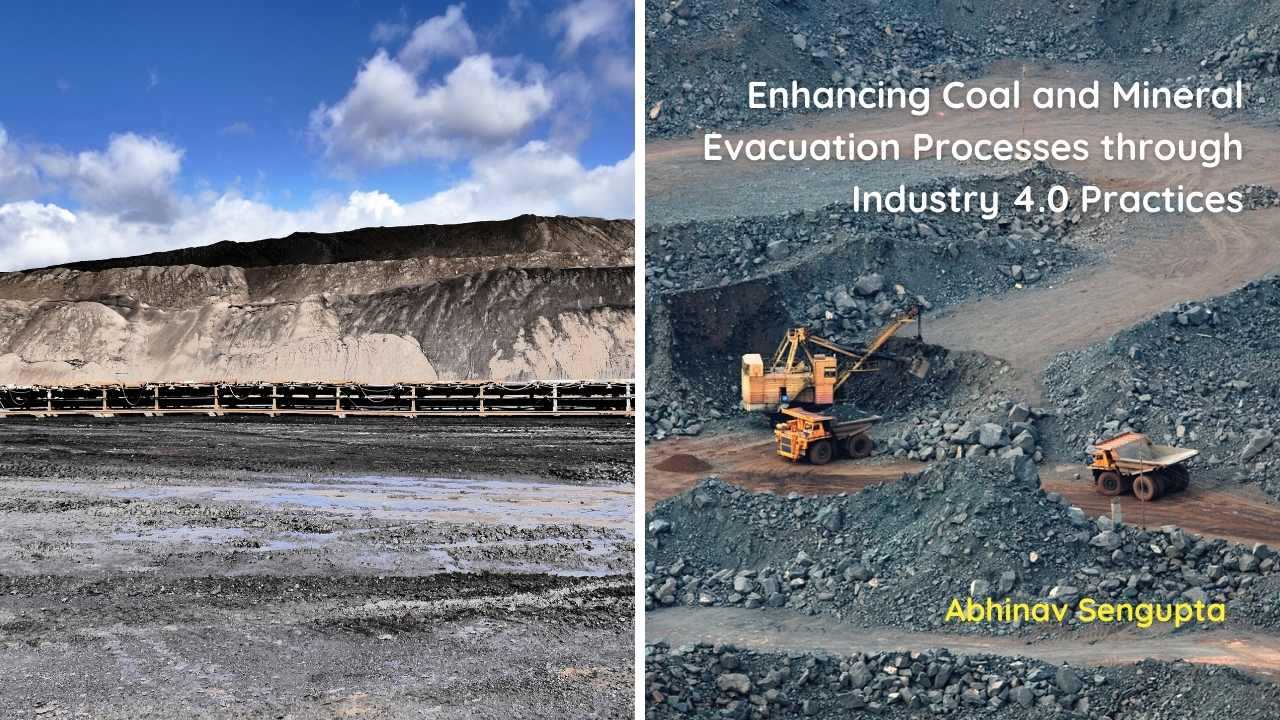Enhancing Coal and Mineral Evacuation Processes through Industry 4.0 Practices
#Industry4.0 #Mining #TransportationElaborating the best practices for logistics and transportation across mines in tandem with Industry 4.0.

Over the years, the transport and logistics aspects of the mining industry has remained conventional in several ways. With the heavy industries heading towards a technological push across multiple verticals, it is about time the mining industry strives to achieve Industry 4.0 best practices in order to optimize manual intervention and efficiency benchmarks.
The current process of conventional inland transportation involves the run of mine (ROM) being loaded into dumpers up to the railway siding, where it is rehandled, stacked and loaded into wagons through loaders or rapid loading systems. On the other hand, slurry transportation or belt/pipe conveyors are also used to transport ROM over long hauling distances. Thereafter, ships are used to export the ROM through ports. However, some of the key challenges involved in this conventional process are:
● No real time tracking of ROM at predetermined delivery points
● Mismatch in material reconciliation & its reporting at respective nodal points
● Time lag in quality checks due to human intervention at select check points
● No or minimum control over prevention of ROM loss during the mode of transit
Some of the identified value losses arising out of the conventional practices of coal/mineral evacuation involve:
● Quantity reconciliation
● Quality checks & balances
● Weighbridge quantity reporting
● Real time tracking of dumpers
● ROM stacking at railway siding
● Tackling pilferage/loss in transit
As part of Industry 4.0, some of the below transformation processes can lead to more efficient coal and mineral evacuation:
1. Weighbridge Automation
An automated weighbridge system eliminates the need for weighbridge operators. The IoT system will identify the trucks and capture weight information which will then be sent to a web dashboard for monitoring. It offers the benefits of lowered operating costs and increased labour efficiency through:
● Automated driver reading and monitoring of events across multiple weighbridges from a single web platform and improve productivity
● Real time live data monitoring with use of IoT sensors to allow traffic flow control by ensuring vehicles are positioned correctly, identifies vehicles and drivers to prevent unauthorized use and captures digital records of every vehicle at the weighing site
2. Automated Fleet Tracking
The Fleet Control functionalities are made available through an open API which is to be plugged in by any other services or software that is connected to it. It has the following advantages:
● AI-powered control tower provides real-time visibility of fleet, progress of routes, and alerts users on SLA breaches to enable timely action.
● It comes with features like electronic proof of delivery, geofencing, and accurate tracking of drivers to ensure that a higher percentage of deliveries are completed on time.
● It also provides mapping, routing, vehicle analytics, connected workflow, advance reporting through dashboards for the entire transit.
Some of the potential benefits of moving towards the Industry 4.0 best practices for logistics and transportation across mines include:
● Real Time transportation monitoring
● Efficient control over quantity supplied
● Control over ROM quality checks
● Seamless data transfer to mine control & command center
● Reduction in material demurrage charges
● Rationalization of manpower requirement
● Cost rationalizations of ROM transportation
NEWSLETTER
TRENDING ON PRO MFG
MORE FROM THE SECTION









